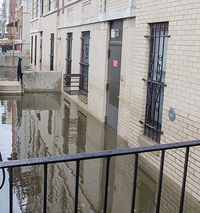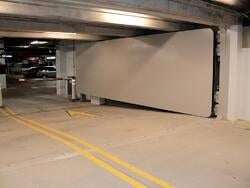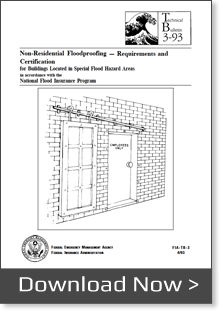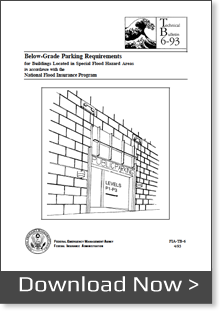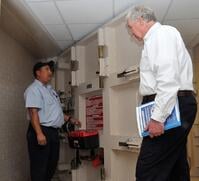National Flood Insurance Program
|
Some flood product companies claim that their products are "FEMA Certified" to meet floodproofing requirements, or "FEMA Tested," but there’s no such thing. FEMA does not certify specific flood mitigation products; so be wary about such claims. However, FEMA does allow non-residential buildings to qualify for the National Flood Insurance Program with a Certification of Floodproofing by a qualified engineer. |
|
Floodproofing Non-Residential Buildings
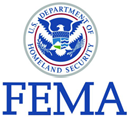 FEMA guidelines for floodproofing non-residential buildings cover the design, construction, and planning of floodproofing requirements under the ‘National Flood Insurance Program (NFIP) regulations, and how to correctly complete the NFIP’s Floodproofing Certificate for Non-Residential Structures.
FEMA guidelines for floodproofing non-residential buildings cover the design, construction, and planning of floodproofing requirements under the ‘National Flood Insurance Program (NFIP) regulations, and how to correctly complete the NFIP’s Floodproofing Certificate for Non-Residential Structures.
We encourage you to download and read the FEMA documents related to floodproofing. Please see links to PDF files on the right.
NFIP regulations that specifically apply to the design of floodproofing for non-residential buildings are in the Federal Code of Regulations Title 44, Section 60.3(c)(3), which states that the community shall:
“Require that all new construction and substantial improvements of non-residential structures within Zones A1 -A30, AE, and AH on the community’s FIRM (i) have the lowest floor (including basement) elevated to or above the base flood level, or (ii) together with attendant utility and sanitary facilities, be designed so that below the base flood level the structure is watertight with walls substantially impermeable to the passage of water and with structural components having the capability of resisting hydrostatic and hydrodynamic loads and effects of buoyancy.”
While National Flood Insurance Program regulations require that non-residential buildings be floodproofed only to the BFE, flood insurance rating procedures include a freeboard, or level of safety criterion. When a floodproofed building is rated for flood insurance, the level of flood protection is assumed at 1 foot below the top elevation of the floodproofing. For rating purposes, the NFIP requires that non-residential buildings be floodproofed to 1 foot above the BFE in order to receive rating credit for the floodproofing design.
All of Presray’s flood products are engineered and tested to far exceed FEMA’s technical definition of floodproofing as being “substantially impermeable to the passage of water” as adapted from standard developed by the Army Corps of Engineers page.
Floodproofing Below-Grade Parking
|
Parking garages are of particular concern because the flooding of these enclosed areas may result in significant damage to the building and any mechanical, electrical, or other utility equipment located there, such as ventilation equipment, lighting, elevator equipment, and drainage pumps. All below-grade parking garages must be dry-floodproofed; therefore, hydrostatic and hydrodynamic forces must be considered in the design. In most designs, the loadings on the above-grade portion of the building are transferred to the structural elements of the below-grade parking garage. Therefore, any structural failure in the parking garage may well result in a failure of the entire building. |
|
Protecting below-grade parking garages represents significant engineering challenges and is a specialty for Presray. We design our floodgates and flood doors to exceed all FEMA and NFIP standards. These products include the FB44 Hinged Floodgate and the FB77 Hinged Flood Door.


